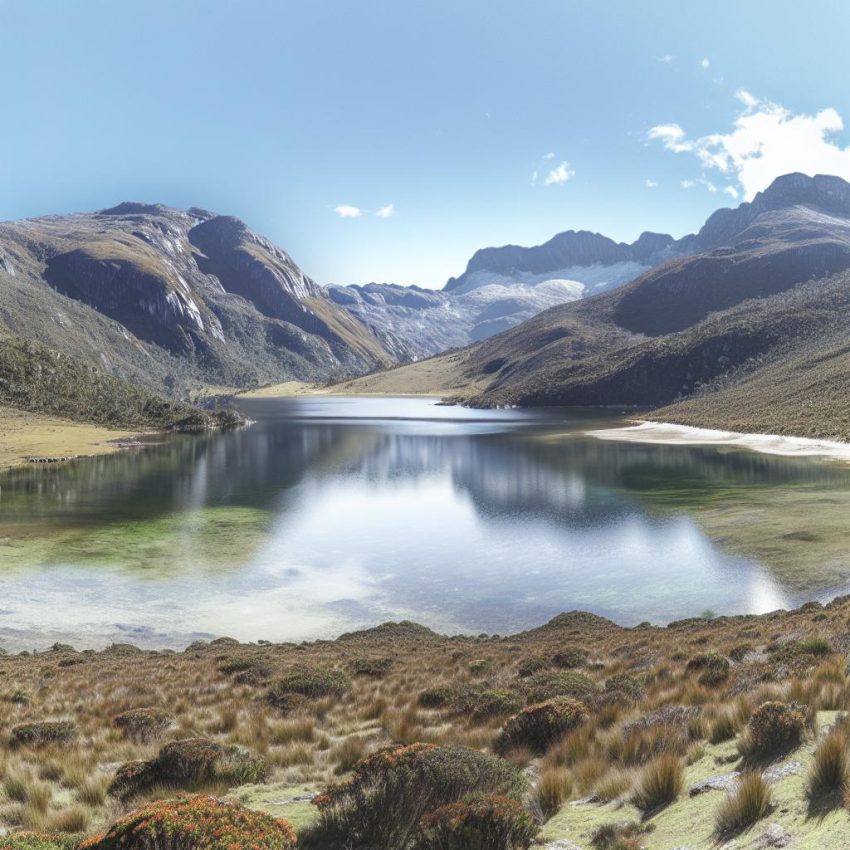Location and Geography
Laguna Brava, a remarkable salt lake, is nestled in the province of La Rioja, Argentina. This natural marvel is positioned at an impressive altitude of approximately 4,200 meters above sea level. Such elevation places it among the high-altitude geographical features of the Andean region. The lake forms an integral part of the expansive Laguna Brava Nature Reserve, an area committed to conservation. This reserve aims to preserve the unique ecosystems and captivating geological formations found in this part of Argentina.
The geographical context of Laguna Brava is a blend of natural beauty and ruggedness. The surrounding landscape is predominantly marked by salt flats, which are interspersed with towering volcanic peaks. These peaks provide a stark yet beautiful contrast to the flat expanse of the salt deposits below. The geographic features of the area are not only visually stunning but also contribute to the unique environmental conditions that define the region.
Climate and Environment
The climate in the vicinity of Laguna Brava is notably influenced by its high-altitude positioning. Characterized by cold temperatures, this climate mirrors the typical patterns found in high-altitude Andean environments. Strong winds are a common occurrence, sweeping across the barren landscapes and contributing to the formation of unique geological features. Precipitation in the area is scant, enhancing its semi-arid conditions and reinforcing the desert-like feel of the environment.
The environmental conditions of Laguna Brava can be challenging. However, they have fostered a distinctive setting that supports unique life forms adapted to the harsh climate. The terrain surrounding the lake is mostly bare, presenting a combination of rocky grounds and salt-covered surfaces. These conditions are a testament to the intense natural forces that shape the region’s climate and geography.
Flora and Fauna
Despite the challenging environmental conditions, Laguna Brava is home to a diverse array of flora and fauna. The biodiversity of the area is fascinating, with several species finding a niche in this unusual habitat. Among the most notable are the bird species, particularly flamingos. These striking birds are a frequent sight at the lake, often observed feeding in the saline waters. Their presence adds a vibrant splash of color to the otherwise muted landscape.
Flamingos at Laguna Brava have adapted remarkably to survive in high-salinity environments. These adaptations enable them to maintain ecological balance within the lagoon. In addition to birdlife, mammals such as guanacos also inhabit the area. Guanacos, the wild relatives of llamas, graze in the surrounding lands contributing to the biodiversity of the reserve. The interaction among these species highlights the ecological complexity and resilience found at Laguna Brava.
Conservation Efforts
Laguna Brava falls under the protective umbrella of the Laguna Brava Reserve. This status emphasizes the commitment to conserving its delicate ecosystems and diverse species. The reserve serves a dual purpose: as a sanctuary for wildlife and as a significant site for scientific study. Ongoing conservation efforts aim not only to preserve the habitat for native species but also to manage the impact of human activities, particularly tourism.
In undertaking these efforts, the reserve works with both local communities and international bodies to foster sustainable interactions with the environment. Education and awareness programs are integral to these efforts, ensuring that both locals and visitors understand the importance of maintaining the ecological balance. The challenges of conservation in such a remote and harsh environment are significant but vital for the protection of its unique natural heritage.
Tourism and Accessibility
The appeal of Laguna Brava as a tourist destination lies in its remote beauty and exceptional ecological characteristics. However, its location and the rugged nature of the surrounding terrain present accessibility challenges. Reaching Laguna Brava typically requires a four-wheel-drive vehicle, as the roads are often unpaved and demand robust transport. Additionally, the expertise of a knowledgeable guide is indispensable for navigating the challenging landscape safely.
Visitors who undertake the journey are rewarded with remarkable vistas and the chance to engage with a unique highland ecosystem. The experience offers not only breathtaking views but also insights into the resilience of life in challenging conditions. Safety precautions are crucial, and all who visit are asked to respect the natural environment to preserve it for future generations.
Tourists planning a visit to Laguna Brava are highly encouraged to consult with local tourism offices for information and travel arrangements. Various travel websites may also offer resources for those interested in experiencing this extraordinary location. These resources provide valuable insights into the best times to visit, necessary preparations, and potential itineraries, ensuring a well-planned and enriching visit.
In conclusion, Laguna Brava stands as a testament to the stark beauty and ecological value of high-altitude environments. From its significant altitudinal location and extreme climate to its fascinating flora and fauna, this remarkable site offers both challenges and incredible rewards for those who explore it. Through concerted conservation efforts and responsible tourism, the unique characteristics of Laguna Brava can be appreciated and preserved for years to come.

